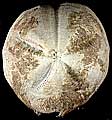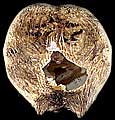The Echinoid Directory
Tripylus Philippi, 1845, p. 344
[=Hamaxitus Troschel, 1851, p. 72 (objective); =Pseudolinthia Markov, 1994, p. 80, type species Pseudolinthia triporata Markov, 1994 ]
| Diagnostic Features |
|
|---|---|
| Distribution | Palaeocene, Kazakhstan; Recent, Antarctic and subantarctic. |
| Name gender | masculine |
| Type | Tripylus excavatus Philippi, 1845, p. 344; by original designation. |
| Species Included |
|
| Classification and/or Status |
|
| Remarks |
|



